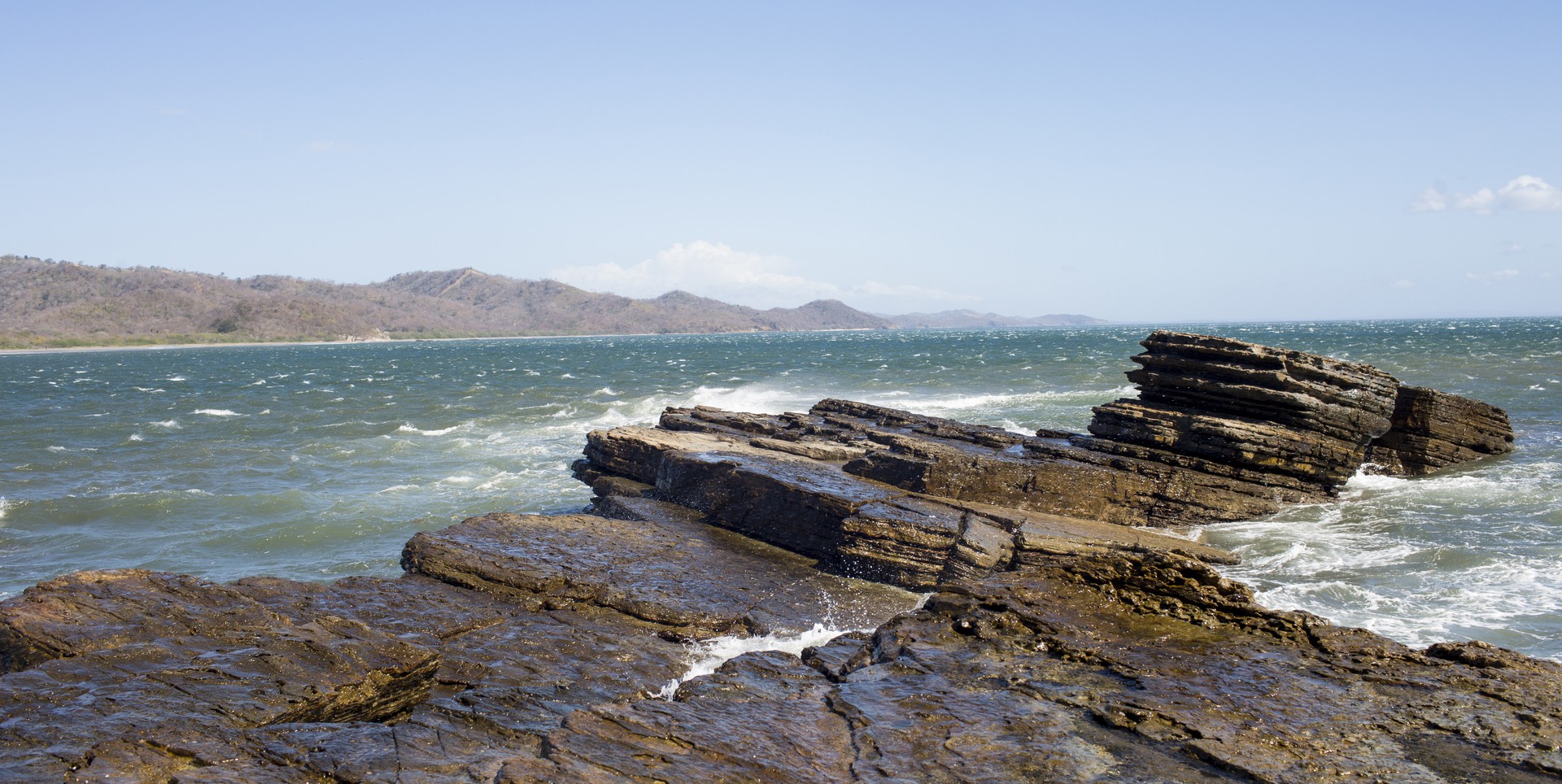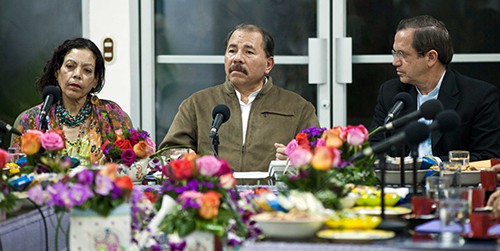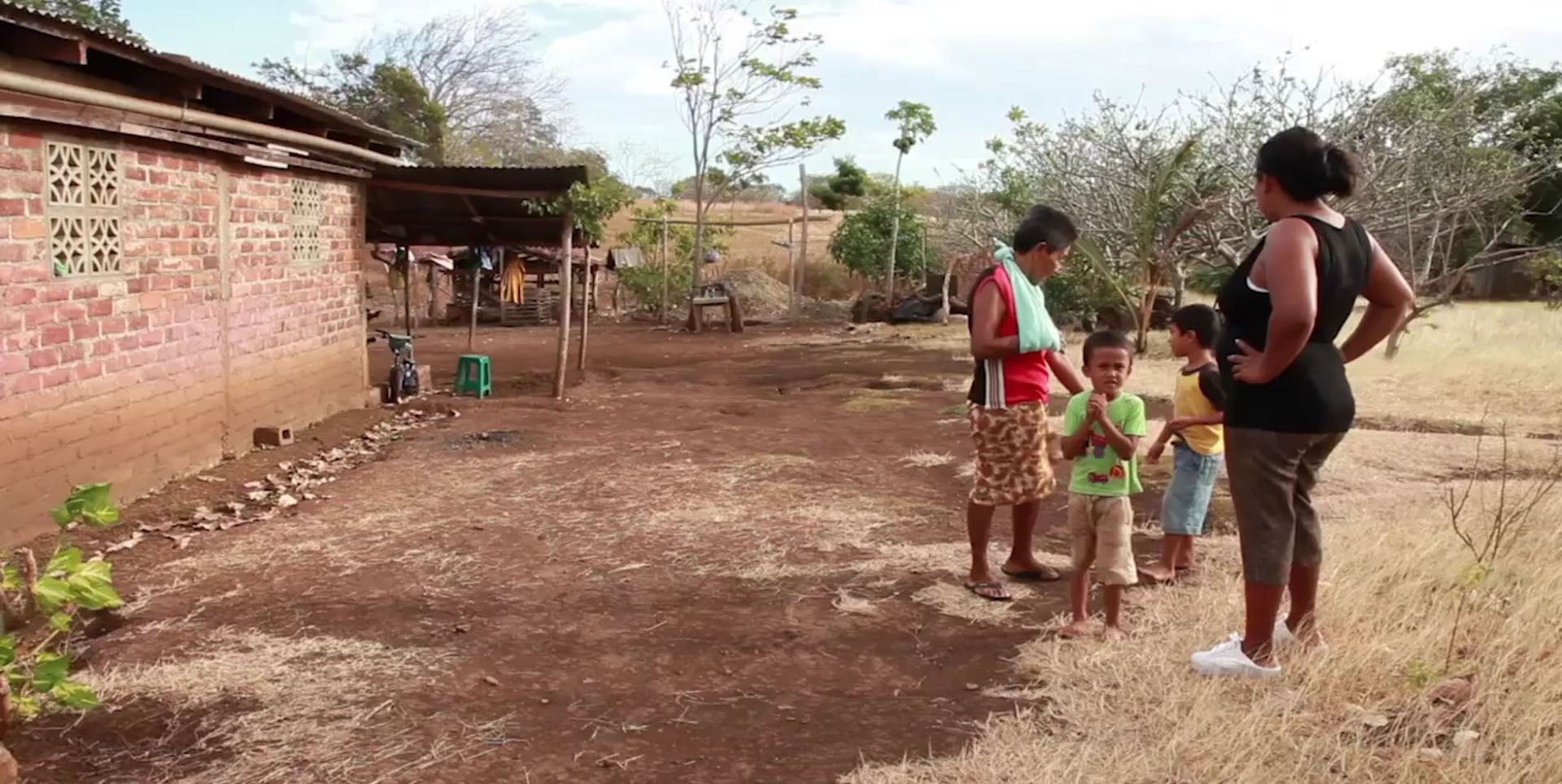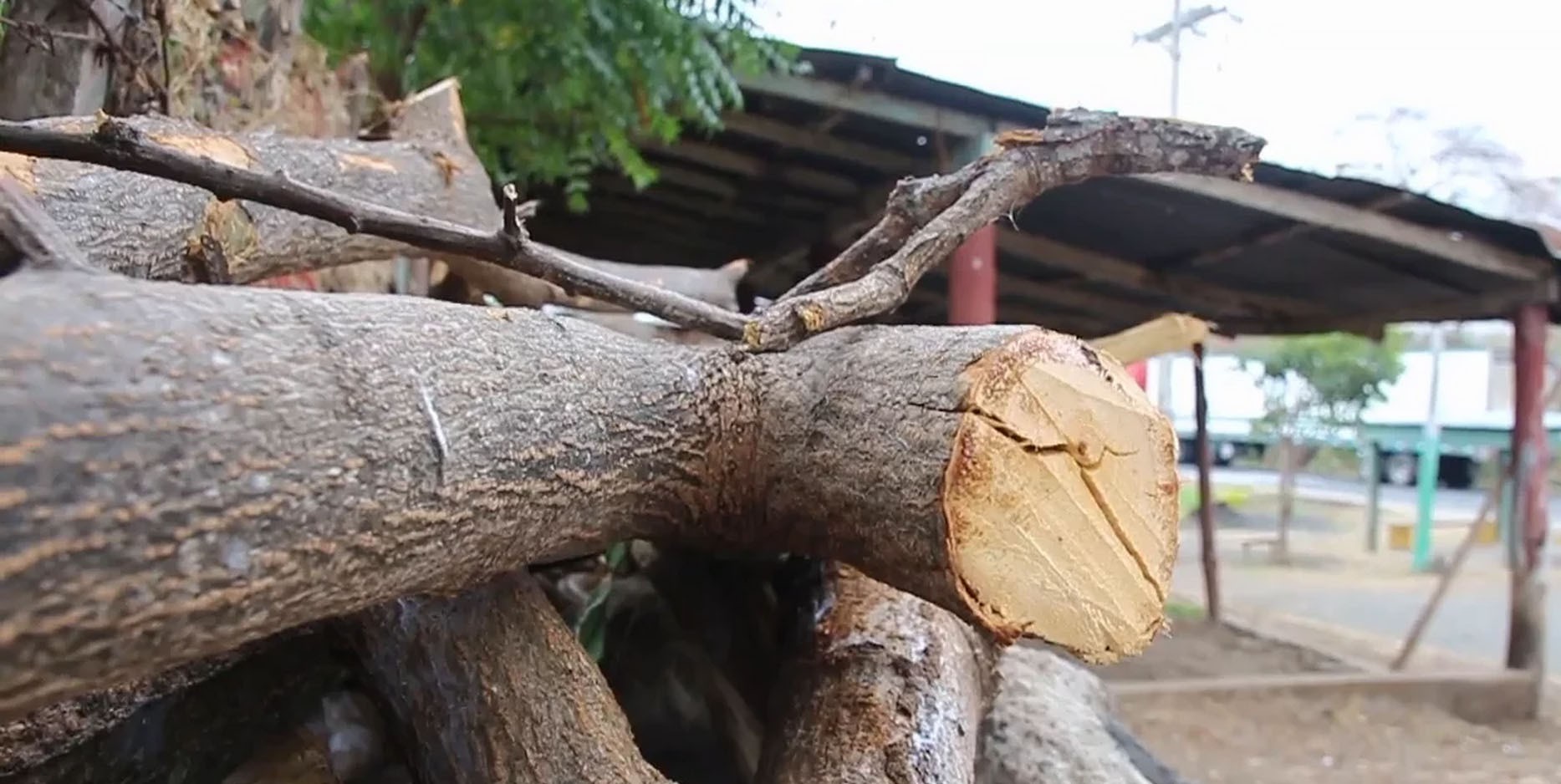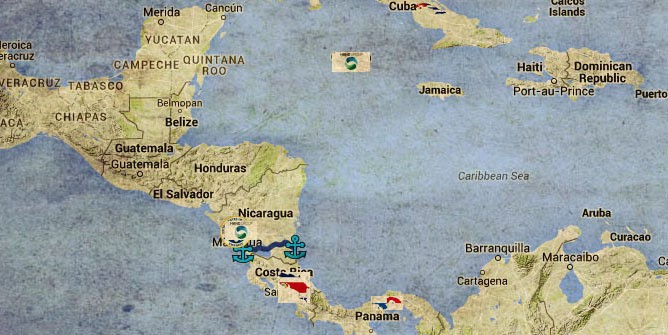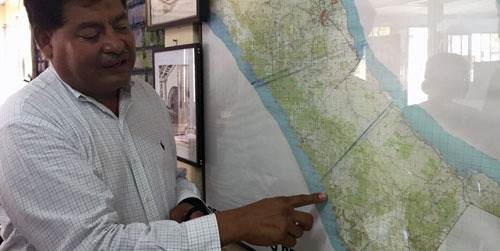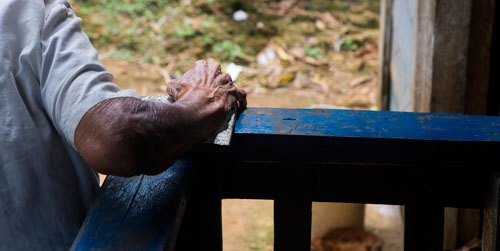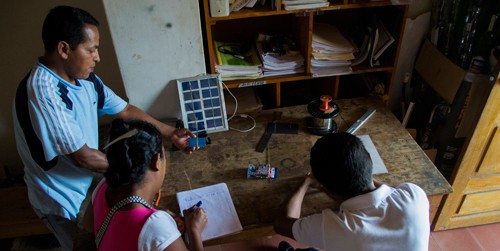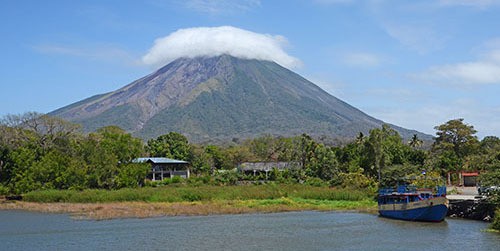
Renewable energy, foreign money keeping the lights on in Nicaragua
By Danika Worthington / Cronkite Borderlands Project
Published June 17, 2015
RIVAS, Nicaragua — Javier Pentzke rests at the base of wind turbine 17 watching paper-white blades chase each other against Nicaragua’s blue sky.
He pulls out his phone to take a photo of the sun poking between the spinning blades.
“I love to see the blades going right in front of me,” Pentzke said, imitating the sound of a turbine. “It’s kind of, I don’t know, it’s kind of relaxing — to me at least.”
The 263-foot tall machine and its 29 sisters at Amayo I and II wind farms contribute to a national electric grid that just 10 years ago regularly lost power for four to five hours a day to the 64 percent of the country with access to it.
When President Daniel Ortega took office in 2007, Central America’s poorest country faced an energy deficit, an expensive dependence on imported oil and the threat of global warming, said Gabriel Sanchez, director of investment for ProNicaragua, an investment and promotional agency for the country.
The socialist-leaning country put out a call to foreign investors: Build your renewable energy projects in Nicaragua.
“This era in Daniel Ortega’s presidency is one where he is actually lifting the gate of commerce and really just trying to drive business into Nicaragua,” said Steven Scott, corporate secretary and director of external financial reporting at Canadian company Ram Power, which has a geothermal plant in Nicaragua.
When Ortega regained the presidency eight years ago, diesel-based thermal power plants carried the country’s energy burden, with renewable energy supplementing only 25 percent of the country's energy needs, Sanchez said.
Clean energy now provides 54 percent of the country’s energy needs for 80 percent of the population with grid access, said Aracely Hernandez, an engineer at the Ministry of Energy and Mines.
And once regular blackouts are a thing of the past.
“The energy industry wasn’t really a business Nicaraguan or foreign companies could go into,” Sanchez said. “That started to change, like I said, in 2007 ... And that’s when you started seeing a lot of companies come into the industry. But before that, it was really small.”
Pentzke works at one of four wind plants in Nicaragua, none of which existed before 2009, according to Sanchez.
“What a drastic change, a beautiful change, to be able to generate power energy from the wind,” Pentzke said. “No fuel burning, no contamination, no risk of any major spilling of any kind to contaminate the environment. So it’s quite wonderful to be able to produce energy, clean energy, to the country.”
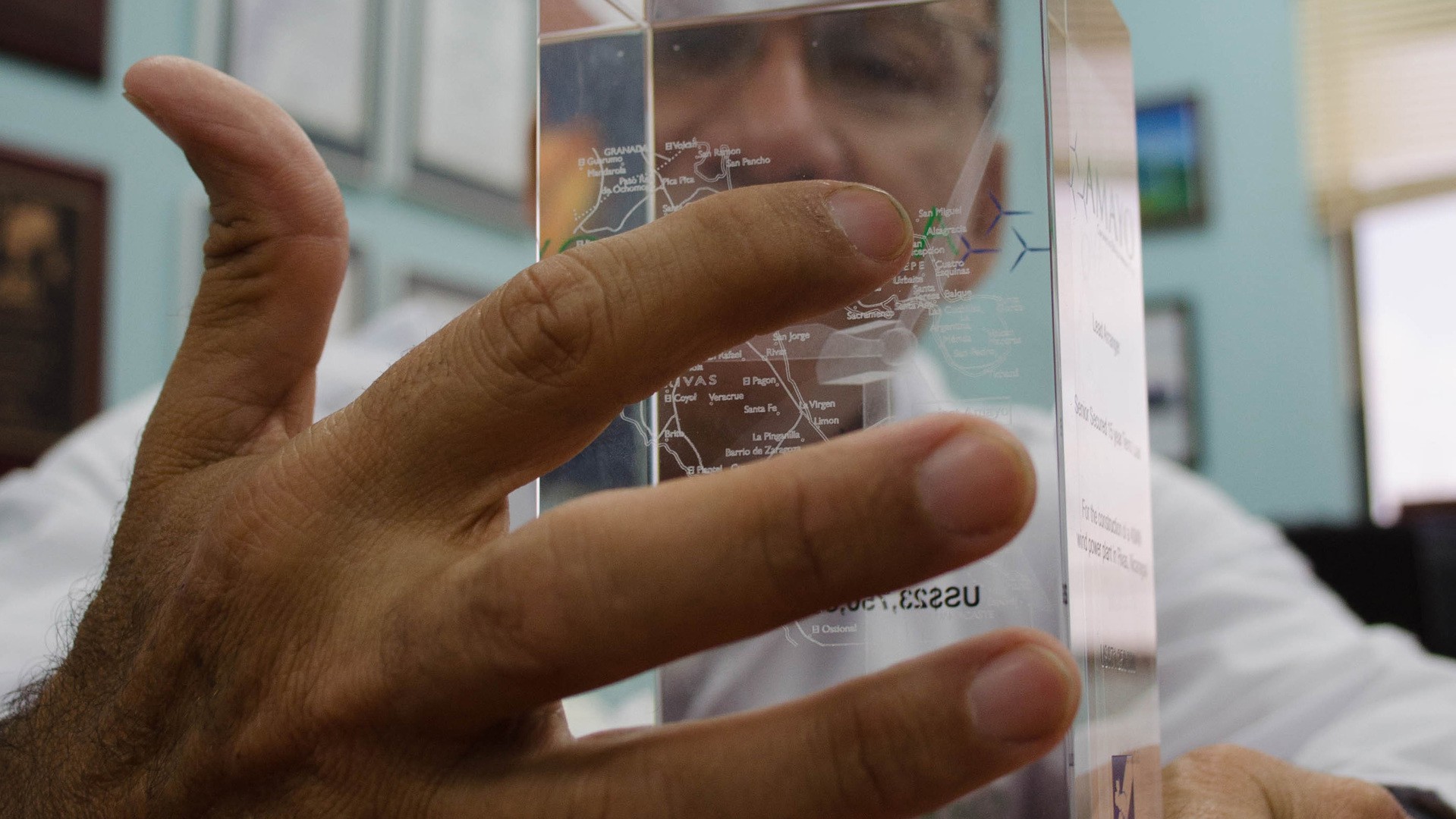
The wind industry provides anywhere from 20 percent to 30 percent of the country’s energy, the most from renewable sources. International organizations funded three of the projects, and the government funded the fourth.
As a result of the emphasis on renewable energy, the country’s oil imports have dropped 13.3 percent, according to data from ProNicaragua.
The expansion of renewable energy in Nicaragua has been led by foreign companies. The energy sector ranks among Nicaragua’s top five sectors receiving foreign investment, Sanchez said.
“A government priority”
Nearly $1.1 billion of foreign investment went into Nicaragua’s energy sector between 2007 and 2013, according to ProNicaragua. Roughly 55 percent of that, or nearly $624 million, went into renewable energy. In 2012, Nicaragua invested the fifth highest percentage worldwide of its GDP in developing renewable energy, according to the Renewables 2014 Global Status Report.
“The energy business is attractive. There’s profit,” Sanchez said. “And that’s why we have private companies. The whole change in the matrix is because of private businesses that have come here and done their projects. And that means that it is profitable.”
The country currently has eight to 10 renewable projects financed by foreign and domestic companies in various stages of development, Sanchez said. The larger projects are foreign; Nicaraguan companies are at a greater disadvantage because they lack start-up funding.
Nicaraguan officials have set goals of 75 percent renewable energy by 2017 and 90 percent by 2020, Sanchez said.
Despite the gains, Nicaragua is far from solving its national energy problems. Roughly 20 percent of the country still lacks grid connection. Energy demand grew by about 33 percent between 2004 and 2013, but it is slowing, meaning there are fewer opportunities for renewable companies to expand.
At the same time, the construction of an interoceanic canal in Nicaragua could double the strain on Nicaragua’s energy grid. Because of Nicaragua’s lack of capacity, the Chinese company building the canal said it plans to build its own energy sources to supplement the national grid during construction.
Nicaragua’s roughly 600 megawatts peak daily demand is low compared to other Central American countries. Honduras to the north uses more than 1,000 megawatts daily and southern neighbor Costa Rica uses more than 2,000, Pentzke said.
Lena Kruckenberg, a doctoral student at the University of Leeds who studied renewable energy partnerships in Central America, said Nicaragua has established a “strong record” of renewable energy over the past five to 10 years.
But energy producers would like to see the demand from consumers grow more quickly to spur expansion.
“We want the growth to go quicker so we can have more wind power and other energy sources,” Pentzke said.
They hope the canal will trigger that growth.
“The energy producers are loving this canal talk because, like I said, the peak demand for electricity is 610, to build the canal is going to take another 600 megawatts because of the pumps,” said Scott of Canada-based Ram Power. “You’re doubling … the energy matrix overnight.”
Foreign energy companies that might have been wary of dealing with a socialist-leaning government have found the Sandinistas accommodating. ProNicaragua’s Sanchez said governmental support, legal protections, fiscal incentives and natural resources have all served to attract foreign energy companies.
“It became a government priority,” Sanchez said. “Investors find that attractive because they know this is something that the government wants, that it’s going to support and that it’s going to make sure that it happens in a sustainable way.”
For instance, Scott said the government was helpful when Ram Power was having problems with a drilling rig company at its geothermal San Jacinto-Tizate Project near Leon.
“We’ve had issues with rigs before and the government stepped in ... so they’ve been fantastic for us, they really have,” Scott said.
Both local and foreign companies are offered tax incentives, including exemptions on property tax, fixed investments, sale of carbon credits and waived import duties for construction materials. The latter is especially crucial, given that Nicaragua lacks those resources.
“For 18 months, almost 22 months actually, we were the chief importer,” Scott said.
The biggest draw
Nicaragua is a prime location for geothermal energy because it’s located where the Cocos and Caribbean plates meet, which creates multiple volcanoes and natural energy that can be harnessed.
“It’s not something that you create, it’s something that the country has or it doesn’t and in our case we have,” Sanchez said. “So that’s, perhaps, the biggest selling point.”
Geothermal plants, like Ram Power’s 52 MW San Jacinto-Tizate Project, convert pockets of hot fluid trapped beneath the earth into usable energy.
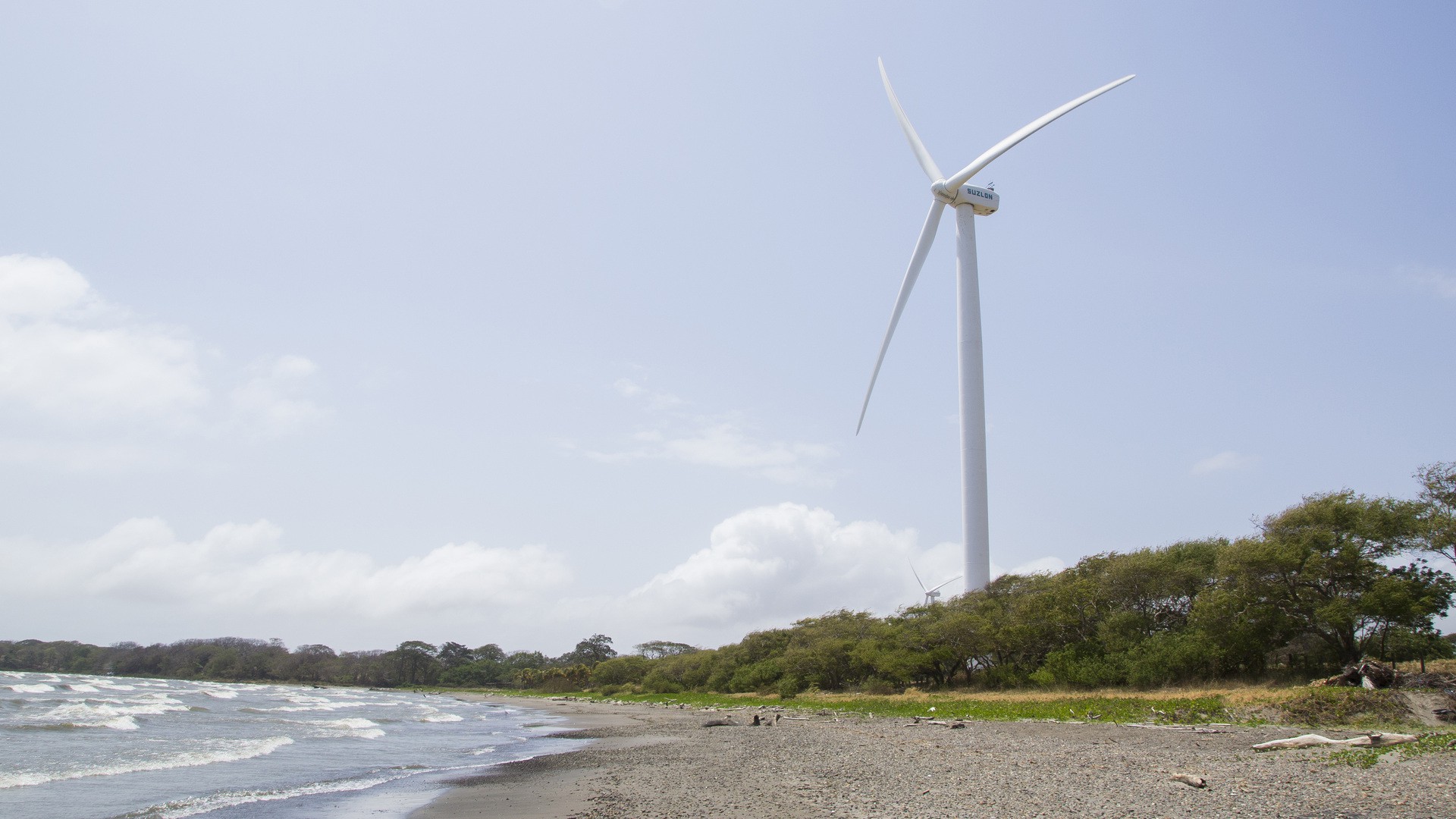
The country also has an ideal setup for wind energy — something Israeli-based IC Power takes advantage of at Amayo I and II wind farms.
Trade winds meet in the Atlantic Ocean east of Nicaragua and then push west across flatlands and Lake Nicaragua, Pentzke said. Two volcanoes tunnel the wind through Rivas, where Amayo and two other wind farms are located. Storms in the nearby Pacific Ocean just west of Rivas bring wind from the other direction.
Despite governmental support and abundant natural resources, investors face other problems endemic to a poor country.
Some companies, such as Ram Power, say engineers are difficult to find. And virtually all of the technical equipment for major projects must be imported, increasing development costs.
Tiny roads complicate the matter once materials reach Nicaragua. Companies have to transport large equipment, such as 140-foot wind blades, across the country. Once the equipment arrives at its final destination, construction equipment such as cranes can be expensive and hard to come by.
But the return on investment is still large enough to convince companies to put up with the logistical problems and costly down payments.
Scott said it’s safe to assume a company makes about $1 million for every megawatt they produce. The San Jacinto-Tizate’s 52 megawatts make Ram Power nearly $52 million a year.
Although unwilling to give specific data, Pentzke said Amayo makes “good business,” and made back its investment in six to eight years.
Worth it at home?
While wind farms like Amayo have attracted large investments, small domestic companies have had difficulties getting into the energy business.
The problem lies in the relative newness of renewable technology. Many banks are hesitant to put money in an industry they don’t understand, Kruckenberg said.
Only one bank in Nicaragua had experience financing renewable energy by 2013, according to a report by the sustainability research organization Worldwatch Institute.
“Financing is always an issue and right now it is a key issue because right now, every day we are looking for funding,” said Alfonso Barquero, marketing manager for Tecnosol, which has turned to U.S. financing to expand its Central America solar business.
While the renewable energy boom has cut Nicaragua’s blackout days, the high costs of energy continue to wreak havoc on the finances of many Nicaraguans.
Gilles Giraudon, who helps run a smoothie shop owned by his wife in Granada, said in February he paid C$7,735.50 cordobas, or $237.62 U.S. dollars, for electricity. That was more than his rent.
With that money, the smoothie shop could hire a new employee and pay him more than minimum wage.
“It’s expensive for the life level,” Giraudon said. “Because if you pay 200 bucks of rent and 300 bucks of light, there is a problem.”
ProNicaragua’s Sanchez agrees that while the foreign and domestic investments in renewable energy have played a large role in stabilizing the energy grid, the average household user has yet to benefit.
“Although the matrix is changing, it will take a while to see an impact on price," he said. "We are basically trying to set the conditions today, to be able to see a reduction further along.”
